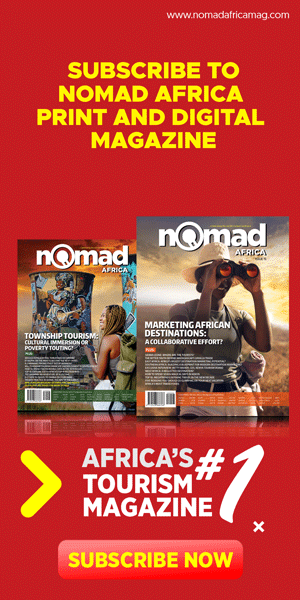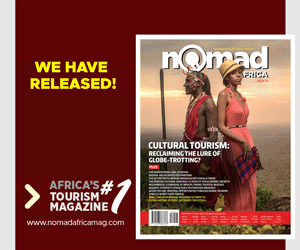As the curtain comes down on the 10th UN World Wildlife Day (WWD), conservationists across the world this year are calling for more people to join the drive for the conservation and sustainable development of endangered wild species.
An ominously dark cloud of an ever-accelerating global biodiversity crisis loomed over the annually celebrated day this year. Most of us cannot even fathom the idea that a time is coming when future generations might speak of Rhinos, Elephants, Turtles, or even Buttlerlies as distant mystical memories the same way we talk about Dodo Birds, Mammoths, or T-rex.
Sadly, experts say that reality is now a very real possibility because of the current ”Extinction Crisis” the Earth is experiencing.
As team Nomad Africa we took some time to delve deeper into this contentious topic to bring you this environmental special feature.

The 3rd of March annually is WWD and this year the theme was “Partnerships for Wildlife Conservation“, chosen to honor the various people who are working together towards making a difference to our furred and floral friends in the wild.
Now the real questions are;
- Is anyone really making a difference?
- How are they doing it?
- But most importantly why should the rest of us even care enough to contribute?
Understanding what the Extinction Crisis really means
Billions of people benefit each day from the use of wild species for food, energy, materials, medicine, recreation, and many other vital contributions to human well-being. Many of us rarely consider the impact of human actions like hunting, pollution, deforestation, and commercial fishing on wildlife populations.
There have been 5 documented mass extinctions in Earth’s history, popularly called the BIG 5, the last one having occurred over 65 million years ago.
Mass extinctions are defined as periods with much higher extinction rates than normal. They are defined by both magnitude and rate. Magnitude is the percentage of species that are lost. Rate is how quickly this happens. These metrics are inevitably linked, but we need both to qualify as a mass extinction.
First 5 Mass Extinction phases-“The Big 5“
- End Ordovician (444 million years ago; mya)
- Late Devonian (360 mya)
- End Permian (250 mya)
- End Triassic (200 mya) – many people mistake this as the event that killed off the dinosaurs. But in fact, they were killed off at the end of the Cretaceous period – the fifth of the ‘Big Five’.
- End Cretaceous (65 mya) – the event that killed off the dinosaurs.
Apparently thereafter, the Earth experienced millions of years of a great boost in species growth.
Until recently, that is!
There is no universal consensus on which exact extinction phase we are now in or when exactly it began, (with some saying we are in the 6th Extinction Phase, others saying it is actually the 7th Extinction Phase ), but what all researchers agree on is that the Earth is currently going through a major biodiversity crisis, which many have dubbed “The Extinction Crisis”.
Biologists say there is irrefutable evidence of a rapidly mounting loss of species on our planet that even surpasses the five great mass extinctions of the geological past.
This is thanks to research efforts of ecologists such as Harvard biologist Edward O. Wilson, who estimated that Earth is currently losing something on the order of 30,000 species per year — which breaks down to the even more daunting statistic of some three species per hour. (Wilson, 1993)

What exactly is happening in this current Extinction phase?
There are several conservation bodies that monitor wild species with the aim of identifying wildlife populations in danger of becoming extinct. The International Union for Conservation of Nature (IUCN) is regarded as the global authority on the status of the natural world and the measures needed to safeguard it.
The latest figures regarding mammalian species (IUCN, 2020-1)
According to the IUCN’s annually published ‘Red List’, over the last decade alone over 160 species are now also been declared extinct, and approximately 42,100 more species of plants and animals are now on the endangered list, which in effect means those species will never be found on Planet Earth again either in the wild or in captivity.
- 5850 existing species have been evaluated.
- 4978 of those are fully assessed.
- 3651 are not threatened at present.
- 1244 to 2116 are threatened.
- 81 to 83 are extinct or extinct in the wild:
- 81 extinct species
- 2 extinct in the wild
The criteria by which species are judged to be endangered are also set by the IUCN. Examples of these include Mountain Gorilla, Butterfly, Dolphin, Rhinoceros, Komodo Dragon, Koala Bear, Giant Panda, Chimpanzee, Snow Leopard, Siberian Tiger, Sea Lion, and the African Wild Dog.
Read more on the full endangered Animals list here.

So what is causing mass extinction now after 65 million years?
- Experts cite habitat degradation as the main human-caused catalyst of species extinctions. The foremost way humans cause habitat degradation worldwide is through agriculture, with urban extensions, logging, mining, and some fishing practices following closely behind.
- Increasing toxicity, Noxious man-made media such as pesticides, can kill off a species very rapidly, by killing all living members through contamination or sterilizing them.
- Diseases are also a factor. For example, white-nose syndrome in bats is said to cause a substantial decline in their populations and may even lead to the extinction of a species.
- Overhunting also has an impact. Terrestrial mammals, such as the tiger and deer, are mainly hunted for their pelts and in some cases meat, and marine mammals can be hunted for their oil and leather.
Once every four years, hosts the IUCN World Conservation Congress which brings together several thousand leaders and decision-makers from government, civil society, indigenous peoples, business, and academia, with the goal of conserving the environment and harnessing the solutions nature offers to global challenges.
Over 9,000 people attended the last Congress in 2021 in Marseille where experts shared the latest science and best practice, and IUCN Members voted on 39 motions to guide humanity’s relationship with our planet for the decades ahead.
This included the Nature 2030 Programme which is the global plan for work towards a vision of a just world that values and conserves nature.

How can we all get involved in the biodiversity conservation drive?
The United Nations started by using the advent of this 10th World Wildlife Day as an opportunity not only to celebrate the many beautiful and varied forms of wild fauna and flora but also to raise awareness and remind everyone of the urgent need to step up the fight against wildlife crime and human-induced reduction of species.
One of these actions everyone can get involved in is by helping the UN to spread the word, especially to children and youth, the future leaders of wildlife conservation, who deserve a future where we humans live in harmony with the wildlife that shares the planet with us.
To participate in the UN WWD outreach click here for some outreach materials.
Remember to use the hashtags #WorldWildlifeDay.

To top it all up, the United Nations recently re-launched the www.wildlifeday.org website with tons more information on the events planned for this year and as a guide to help us all get involved in these WWD campaigns, from wherever we may be.
Another world authority working hard to make a difference, the Centre for Biological Diversity, is one of the organizations that continues to be at the center of efforts to secure our planet’s future. They have embarked on countless activities to help protect bears, manatees, grey wolves, butterflies, and all other species in danger of one day becoming a mere memory.
Most of these organizations have platforms where the public can join them virtually or financially to help sustain their work to impede the biodiversity crisis.
Other notable organizations calling for extra hands to join them.
- https://www.worldwildlife.org/
- https://www.nationalgeographic.org/society/our-focus/
- https://onekindplanet.org/global-campaigns/
The history of World Wildlife Day
World Wildlife Day was set up by the United Nations General Assembly in 2013 to celebrate and raise awareness of the world’s wild animals and plants. The date of 3 March was chosen to commemorate the signature of the Convention on International Trade in Endangered Species of Wild Fauna and Flora (CITES), which took place exactly 50 years ago on 3 March 1973.
CITES is an international agreement between governments to ensure that international trade in specimens of wild animals and plants does not threaten their survival. Since its inception, World Wildlife Day has become the most important global annual event dedicated to wildlife.
In conclusion, it is plain to see that when we as humans disturb our ecosystem by putting certain species at risk, we disrupt nature’s equilibrium on our planet. Although extinction may be a natural phenomenon, human impact is accelerating the rate.
Needless to say, it may only take restorative human impact to restore that equilibrium and halt the progression of the extinction crisis or even, dare we say, the annihilation of our whole biosphere in the near future.
The solution is simple, in the words of WWD, just #DoOneThingToday to support forest communities and conserve wildlife.





















